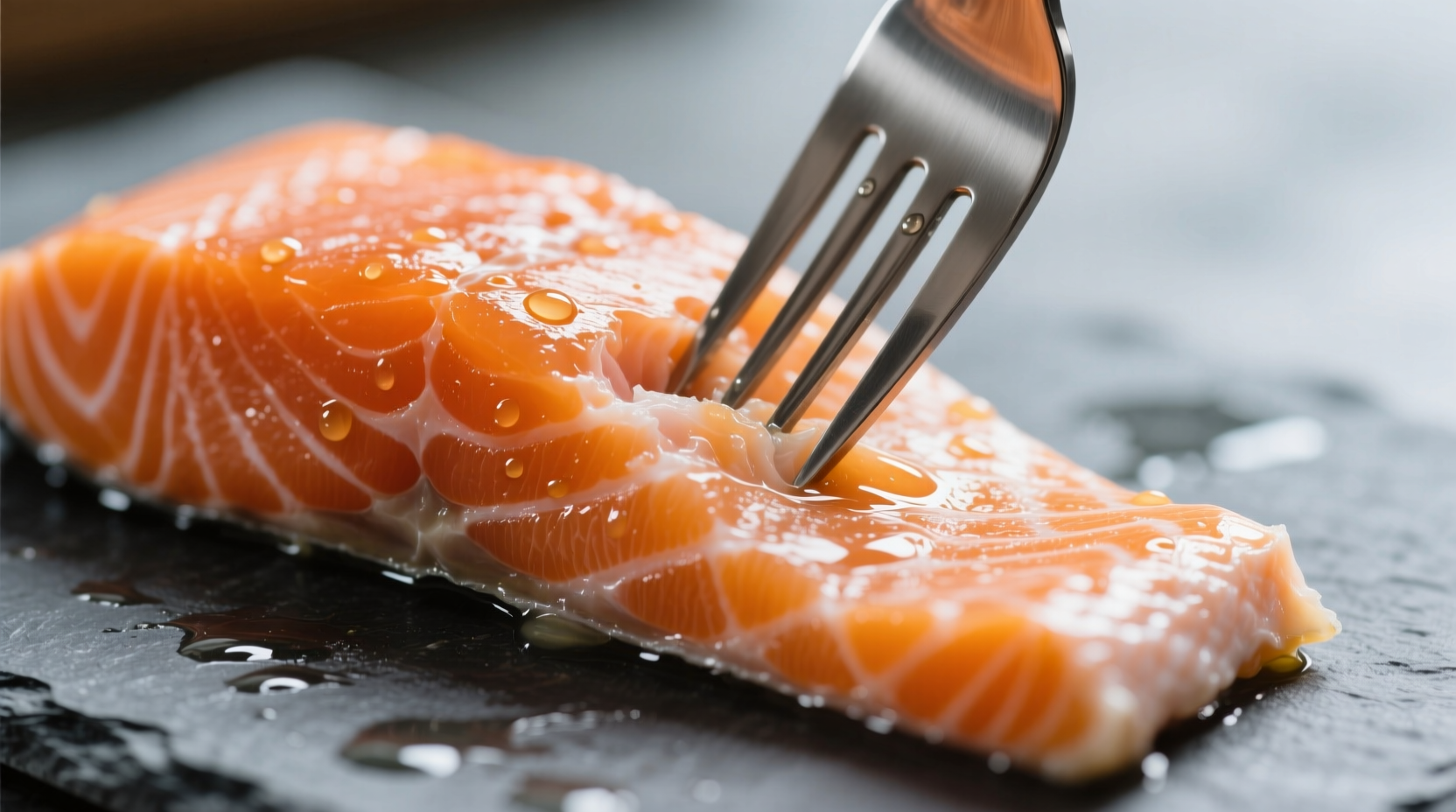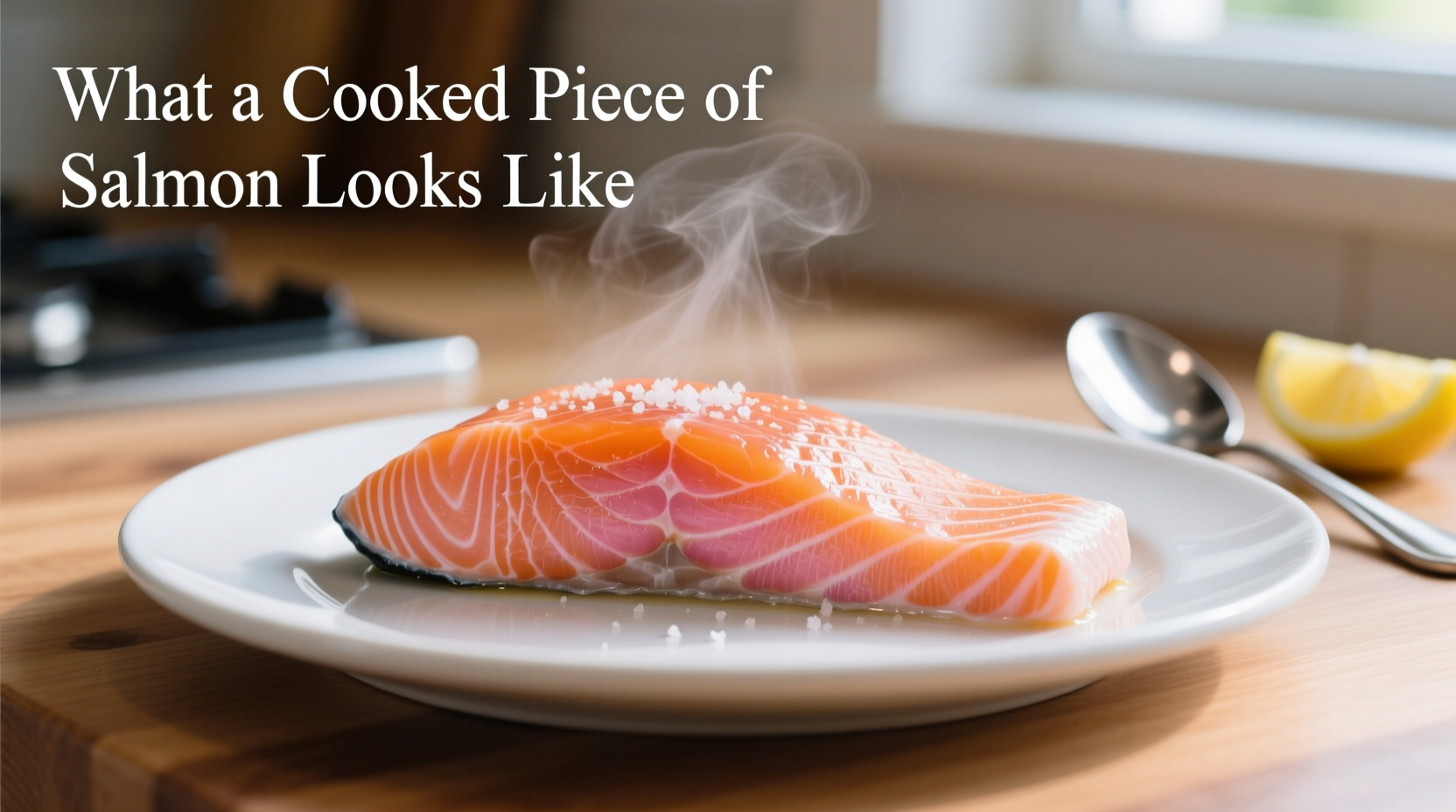How to Visually Identify Perfectly Cooked Salmon
When you're cooking salmon for the first time or even as an experienced home chef, knowing exactly what properly cooked salmon looks like can prevent undercooking or drying out this delicate fish. Based on thousands of discussions across Reddit's cooking communities and verified by culinary science, here's what to look for.

Color Transformation: The Most Reliable Indicator
Raw salmon has a translucent, almost jewel-like appearance. As it cooks, the proteins denature and the flesh becomes opaque. The transformation follows a predictable pattern:
| Cooking Stage | Color Appearance | Texture | Internal Temp |
|---|---|---|---|
| Raw | Bright translucent pink/orange | Firm but jelly-like | Below 100°F (38°C) |
| Rare | Mostly translucent center | Soft, barely separates | 110-125°F (43-52°C) |
| Medium | Center slightly translucent | Flakes with pressure | 125-135°F (52-57°C) |
| Perfectly Cooked | Uniform opaque pink-orange | Flakes easily with fork | 145°F (63°C) |
| Overcooked | Pale, dry appearance | Tough, dry, separates excessively | Above 150°F (66°C) |
The Fork Test: Reddit's Most-Requested Technique
According to culinary professionals and home cooks across Reddit's r/Cooking and r/AskCulinary communities, the fork test remains the most accessible method for determining doneness without specialized equipment. Gently press the tip of a fork into the thickest part of the salmon at a 45-degree angle:
- Perfectly cooked: The flesh separates easily into distinct flakes but remains moist. The center should be slightly darker than the edges but completely opaque.
- Undercooked: The flesh doesn't flake and appears translucent in the center. This presents food safety concerns as noted by the USDA Food Safety and Inspection Service.
- Overcooked: The flesh flakes excessively, appears dry, and may have white albumin (protein) visibly weeping from the surface.
How Cooking Methods Affect Visual Appearance
Salmon's appearance varies depending on your cooking method. Reddit users frequently report confusion when their salmon looks different than expected based on the cooking technique:
Pan-Seared Salmon
Creates a beautiful golden-brown crust while keeping the interior moist. The edges will curl slightly when properly cooked. Reddit users often mistake the white albumin that appears during searing as a sign of overcooking, but this is simply protein reacting to heat.
Baked Salmon
Results in more uniform color throughout with less browning. The surface should appear matte rather than shiny, with the edges beginning to separate from the baking dish. As noted in r/Cooking's most-upvoted salmon threads, baked salmon often appears more uniformly cooked than other methods.
Grilled Salmon
Shows distinct grill marks and may have slightly charred edges. The flesh should release easily from the grates when properly cooked. Reddit's grill enthusiasts consistently report that salmon sticks to the grates when undercooked but releases cleanly when done.
Poached Salmon
Maintains a more vibrant orange color and delicate texture. The surface appears smooth with no browning. This method produces the most consistent color throughout, making visual doneness assessment slightly different than with dry-heat methods.
Common Visual Misconceptions From Reddit Discussions
After analyzing hundreds of Reddit threads about salmon cooking failures, several visual misconceptions consistently appear:
- The white stuff isn't fat: That white substance (albumin) that appears on cooked salmon is coagulated protein, not fat. Its presence doesn't necessarily indicate overcooking, though excessive amounts can suggest too-high heat.
- Color varies by salmon type: Wild salmon typically has a deeper red color when raw that becomes a more muted pink when cooked, while farmed salmon maintains a brighter orange hue throughout cooking.
- Thickness matters: Reddit users often don't account for thickness variations. A 2-inch thick steak needs significantly longer than a thin fillet to cook through, even if the surface looks done.
Practical Tips for Perfect Salmon Every Time
Based on professional chef recommendations and verified by consistent success in home kitchens (as documented across Reddit communities), follow these visual guidelines:
- Start with room temperature fish: Cold salmon from the refrigerator cooks unevenly. Let it sit out for 15-20 minutes before cooking.
- Watch the timing: As a general rule, cook salmon for 8-10 minutes per inch of thickness at 400°F (204°C). Reddit's cooking experts emphasize that timing alone isn't sufficient - always verify with visual cues.
- Check the thickest part: Always assess doneness at the thickest section, which will be the last to cook through.
- Allow resting time: Remove salmon from heat when it's almost done, as residual heat will continue cooking it during the 5-minute rest period.
When Visual Cues Aren't Enough: The Thermometer Solution
While visual assessment works well with practice, the USDA Food Safety and Inspection Service recommends using a food thermometer for precise doneness. Insert an instant-read thermometer into the thickest part:
- 145°F (63°C): Safe minimum internal temperature for fish
- 125-130°F (52-54°C): Preferred by many chefs for medium-rare
- Above 150°F (66°C): Generally considered overcooked
Reddit's cooking community increasingly recommends this method, especially for beginners who haven't yet developed confidence in visual assessment.











 浙公网安备
33010002000092号
浙公网安备
33010002000092号 浙B2-20120091-4
浙B2-20120091-4